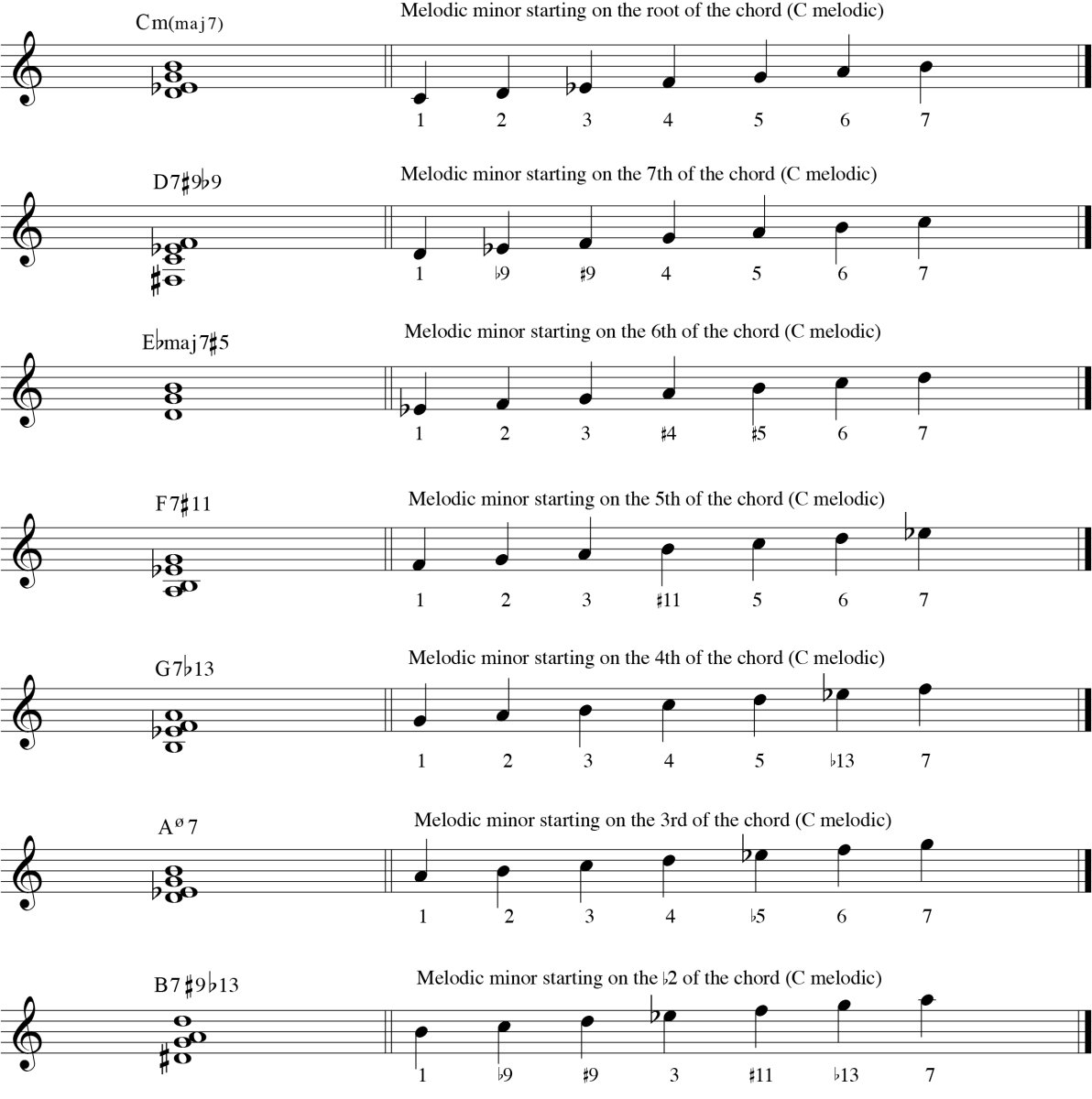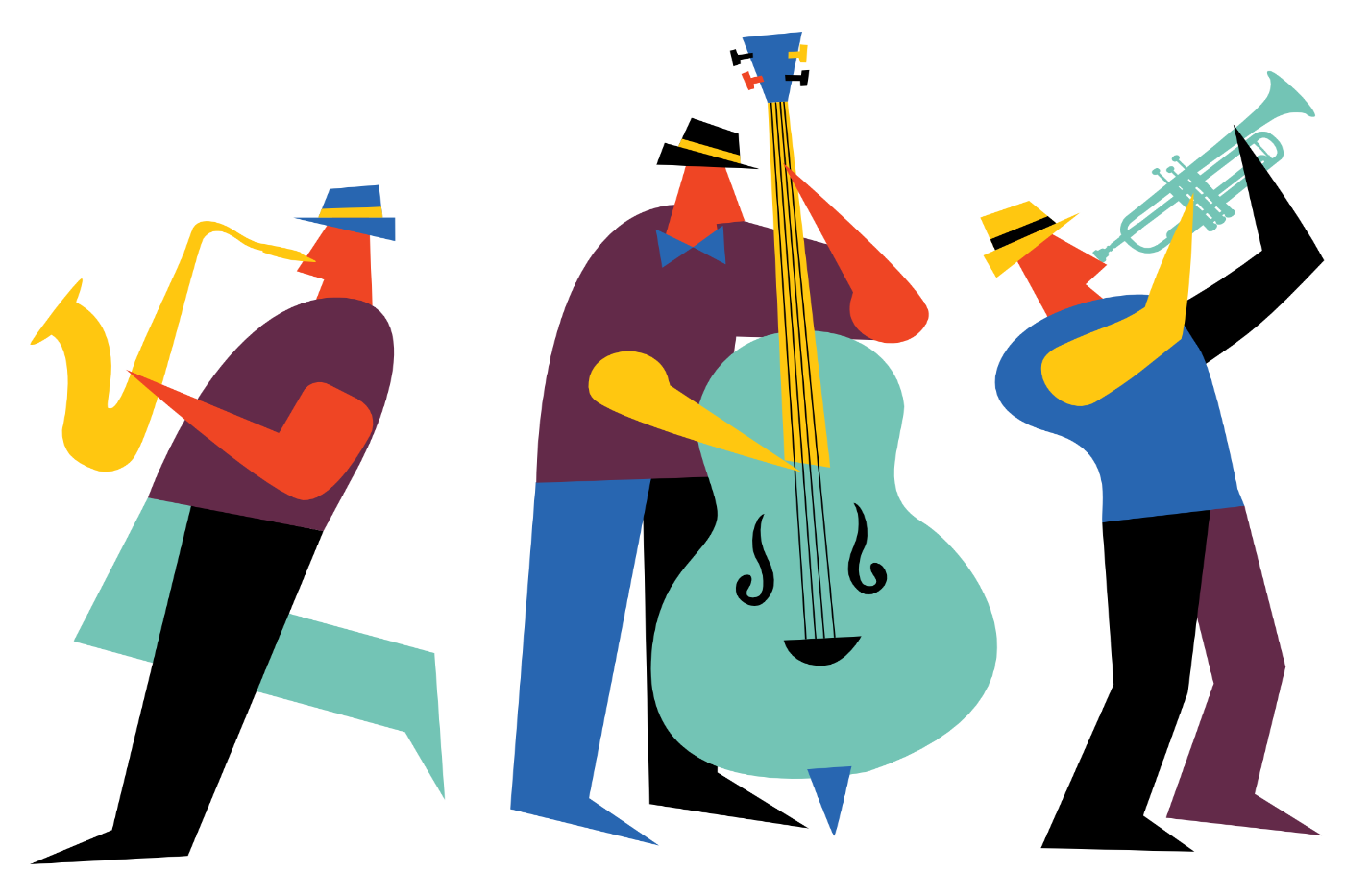Modes of the Melodic Minor Scale
Are you confused about when or how to use the melodic minor scale when improvising? Before I get started with the topic of this post, let me just say that CHORD TONES RULE!
What I mean by "chord tones rule" is that knowing how to arpeggiate your chords and knowing how to resolve your line to chord tones on the strong beats of a measure, is the essence of "making the changes" and playing inside of the harmonic progression. After you've studied your chords and can play interesting melodic solos with just chord tones, investigating chord scale relationships is a natural evolution to becoming a mature improviser.
Melodic Minor Scales What do the following modes/scales have in common?
- mode 2 - C Dorian b2, C Phrygian #6
- mode 3 - C Lydian Augmented
- mode 4 - C Lydian b7, C Lydian Dominant, C Mixolydian #4, C Overtone scale
- mode 5 - C Mixolydian b6, C Hindu scale
- mode 6 - C Locrian #2, C Aeolian b5, C Half-Diminished Scale
- mode 7 - C Super Locrian, C Altered scale, C Diminished Whole-Tone scale*
Don't know... give up?
The answer is the ascending C melodic minor scale. All the modes/scales listed above and others that I didn't list contain the same notes as the ascending C melodic minor scale. And there's even another name for an ascending melodic minor scale, which is the jazz melodic minor scale. The difference between how we use the melodic minor scale in jazz and classical music is that in jazz we use the ascending form (raising the 6th and 7th from the natural minor scale) both ascending and descending. Classical composers will lower the 6th and 7th degrees descending, creating a natural minor scale.
It is insane for you, the developing jazz musician, to think that you need to learn 12 Super Locrian modes, 12 Locrian #2 modes, 12 Lydian b7 modes, or 12 of any of the other melodic minor modes. What you need to learn are the 12 ascending melodic minor scales or jazz melodic minor scales. If you know your major scales, you already know your jazz melodic minor scales. The scale can be thought of as a major scale with a lowered 3rd.
In the list above, I have given you many of the commonly used names for each of the modes. For instance, some musicians refer to the 7th mode of the ascending melodic minor scale as the Super Locrian mode or the altered scale or the diminished whole-tone scale.
Unfortunately, there is no pedagogical standard.
In the diagram below, I represent all the modes that are generated by a C ascending melodic minor scale. For clarity, I am using only one of the common names for each of the modes.

Using the melodic minor scale over different chord qualities is a matter of starting the scale on a different chord degree, rather than thinking of different modes. Once you know and can execute your melodic minor scales, all you need to learn is which chord degree to start on. If I’m playing over an Ebmaj7#5 chord, I’ll play the melodic minor scale starting on the 6th of the chord, which is the C melodic minor scale. If I’m playing over an Aø7 chord, I’ll play a C melodic minor, which is the melodic minor off of the 3rd of the chord. I could also play in the key of Bb major since the Aø7 chord is found on the seventh step of a Bb scale, but using a melodic minor scale on that chord is a great sound.
The chart below shows seven common chord qualities that we find in many jazz tunes. The ascending C melodic minor scale (jazz melodic minor) is used over each chord.

It might take a little time for you to absorb this concept, however, I am confident that when you do, you will have simplified the usage of the jazz melodic minor scale in your playing and know when and how to use it.

